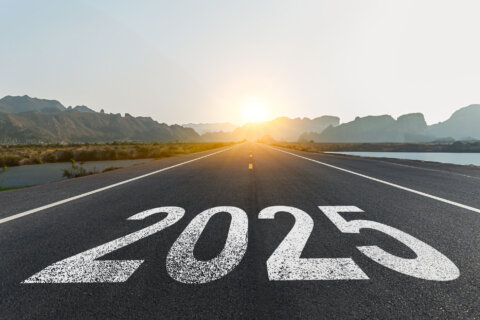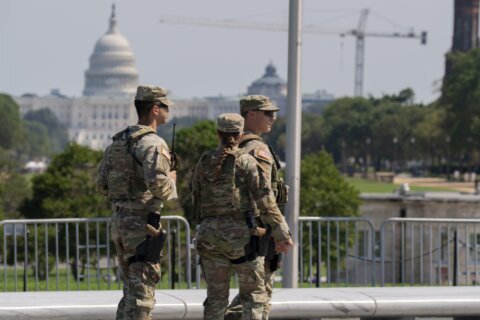The goal of Vision Zero DC was ambitious — to have zero traffic fatalities or serious injuries in the District by 2024. A new report shows improvements are underway, but more work remains to achieve the safety goal.
“We, like frankly every other city across the country, have not gotten even close,” D.C. Auditor Kathy Patterson said. “In fact, things have been worse since the initiative began — I think we had 52 traffic deaths in 2023, which is a 16-year-high.”
While the auditor’s office’s first Vision Zero report focused on the District Department of Transportation’s engineering strategies, the new study looked at the traffic enforcement strategies of DDOT, D.C. police and the city’s Department of Public Works.
“The Metropolitan Police Department’s actual traffic stops for safety purposes have fallen way down,” Patterson said. While a drop wasn’t unexpected during the pandemic, the audit finds traffic violations, warnings and arrests by D.C. police in 2021 and 2022 dropped well below pre-pandemic levels, and have not increased substantially.
“We’re going to increase the number of traffic cameras by a significant amount,” said Patterson, continuing a trend toward automated traffic enforcement in D.C.
Patterson said while approximately 60% of the District’s red light and speed cameras were located at high-priority locations, as outlined in a 2015 action plan, fewer than half of the 25 most hazardous intersections had a camera deployed.
Patterson said there has been improvement since DDOT took over the camera program from police.
“One of the things that we think they’re really working hard on is communications, so when there’s concern expressed by the community, that community’s concern is reflected,” Patterson said. “There is more analysis, more planning — I think their intention certainly is to make sure that all the dangerous intersections have some level of control.”
The audit also touched on equity in enforcement and safety efforts.
Most victims of D.C. traffic fatalities in recent years have been Black — 89% in 2020 — despite comprising only 44.2% of the population.
“Some of the high statistics of accidents and fatalities have been in the some of the poor neighborhoods in the District of Columbia,” Patterson said. “So does that speak to putting more traffic cameras in those neighborhoods, and does that mean more residents in those neighborhoods then get traffic tickets and fines when they’re low income and may have trouble paying?”
Patterson said it’s up to D.C. lawmakers to consider what “equity” is in implementing policies to benefit residents.
“Is the equity in promoting the safety with cameras, or promoting an understanding of the population by not imposing those fines,” Patterson said. “Those are some of the kinds of very tricky considerations.”
While it is not part of the audit, the report notes an “auditor’s concern” regarding Mayor Muriel Bowser’s efforts to improve enforcement for tickets issued to Maryland and Virginia drivers, which make up 80% of the automated traffic enforcement tickets issued.
“The Council enacted legislation a few years ago that actually had a requirement requiring the mayor to negotiate with Maryland and Virginia on reciprocity in going after those who receive tickets through the camera program,” Patterson said. “That’s something we say basically has not been done.”
WTOP has reached out for comment from the mayor’s office on the audit and Patterson’s observations. Bowser and the Council are not required to act upon Patterson’s audit.
“Sadly, the D.C. Auditor does not have enforcement authority. We have ‘reminding authority’ and ‘noodging authority,” said Patterson. “And we will come back to all of these issues with recommendations and a compliance report, but we do not have enforcement authority.”
Get breaking news and daily headlines delivered to your email inbox by signing up here.
© 2024 WTOP. All Rights Reserved. This website is not intended for users located within the European Economic Area.








